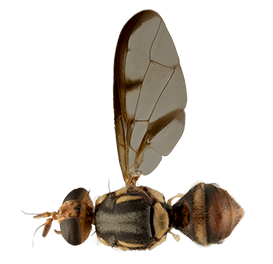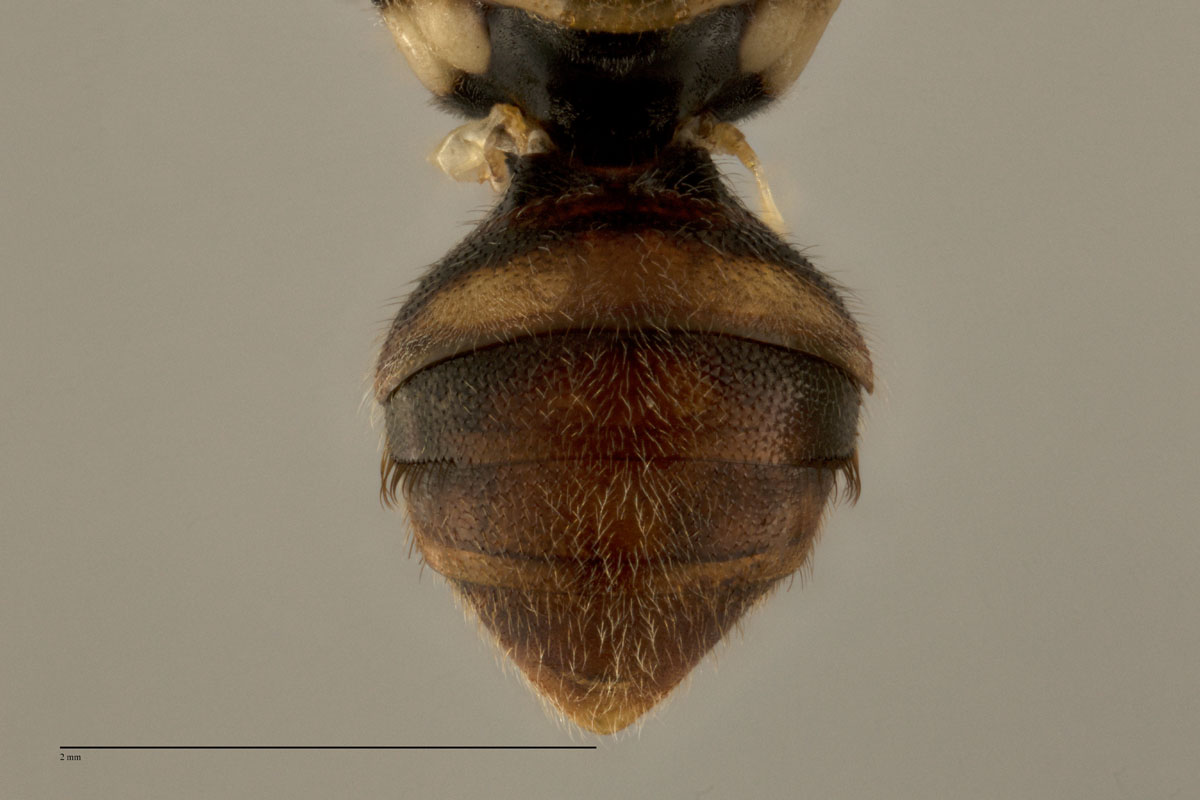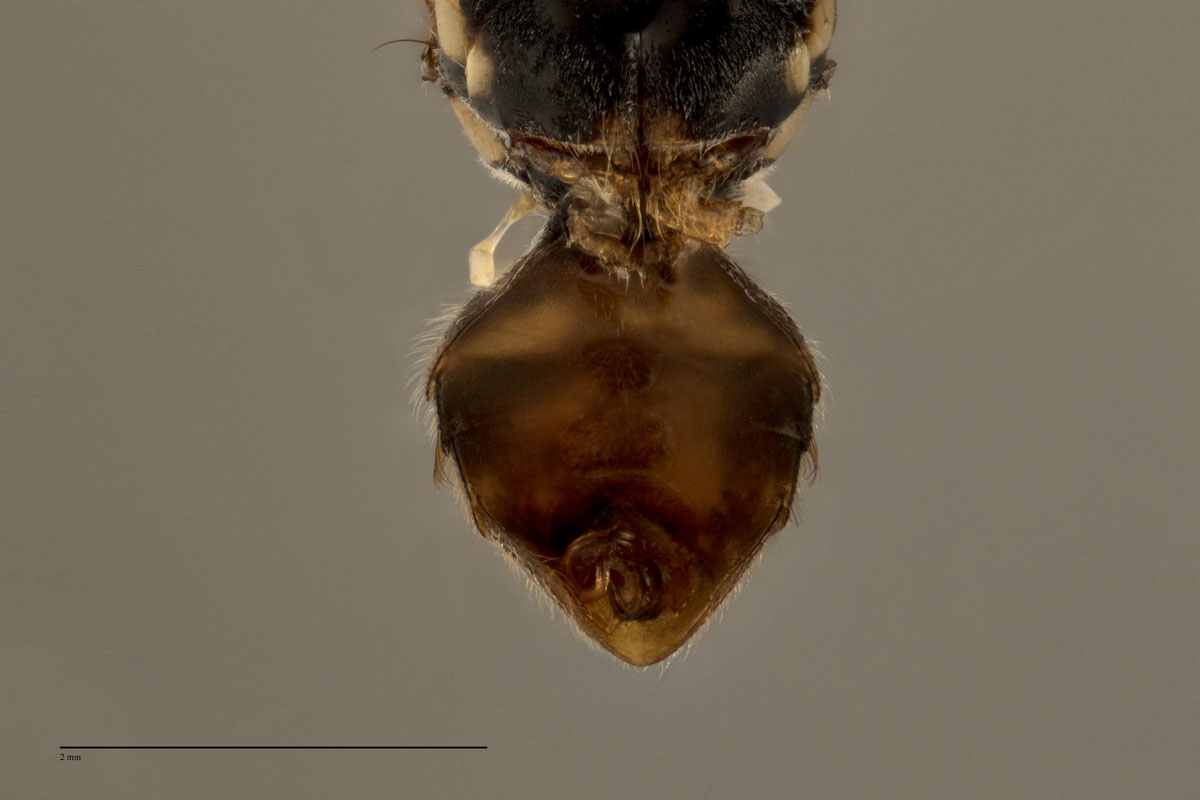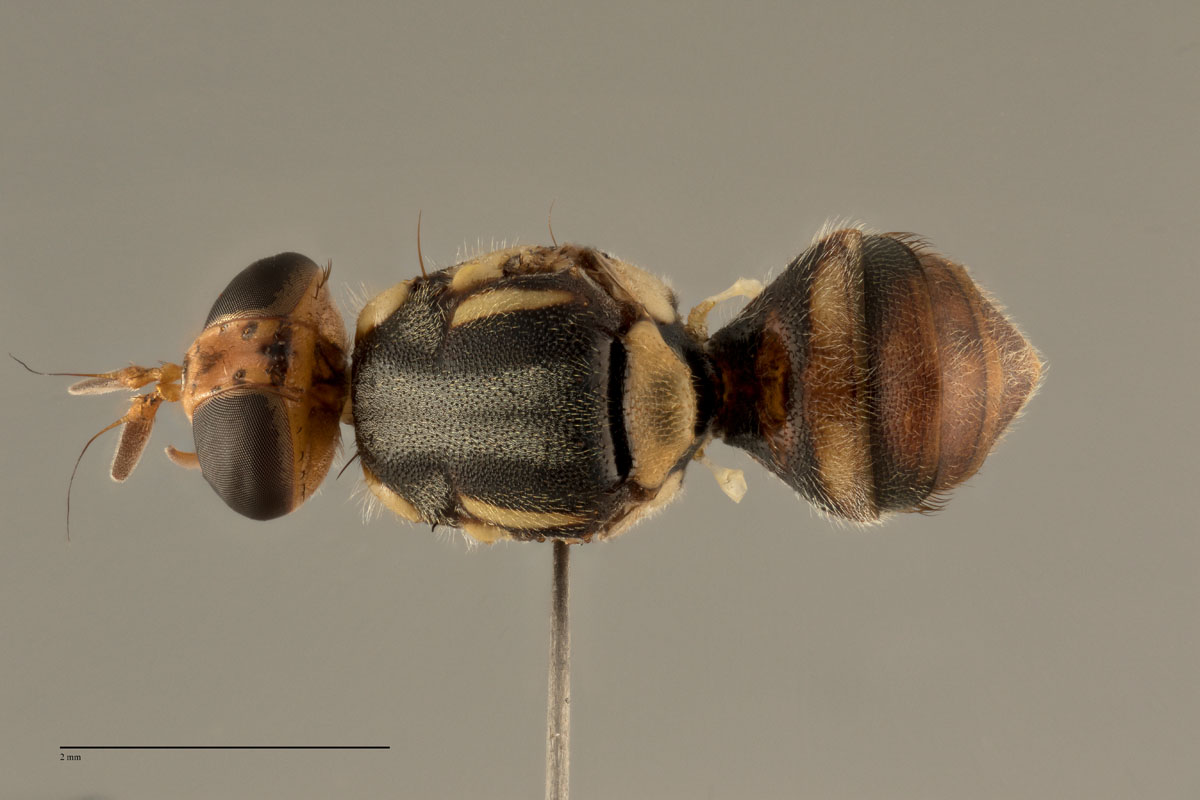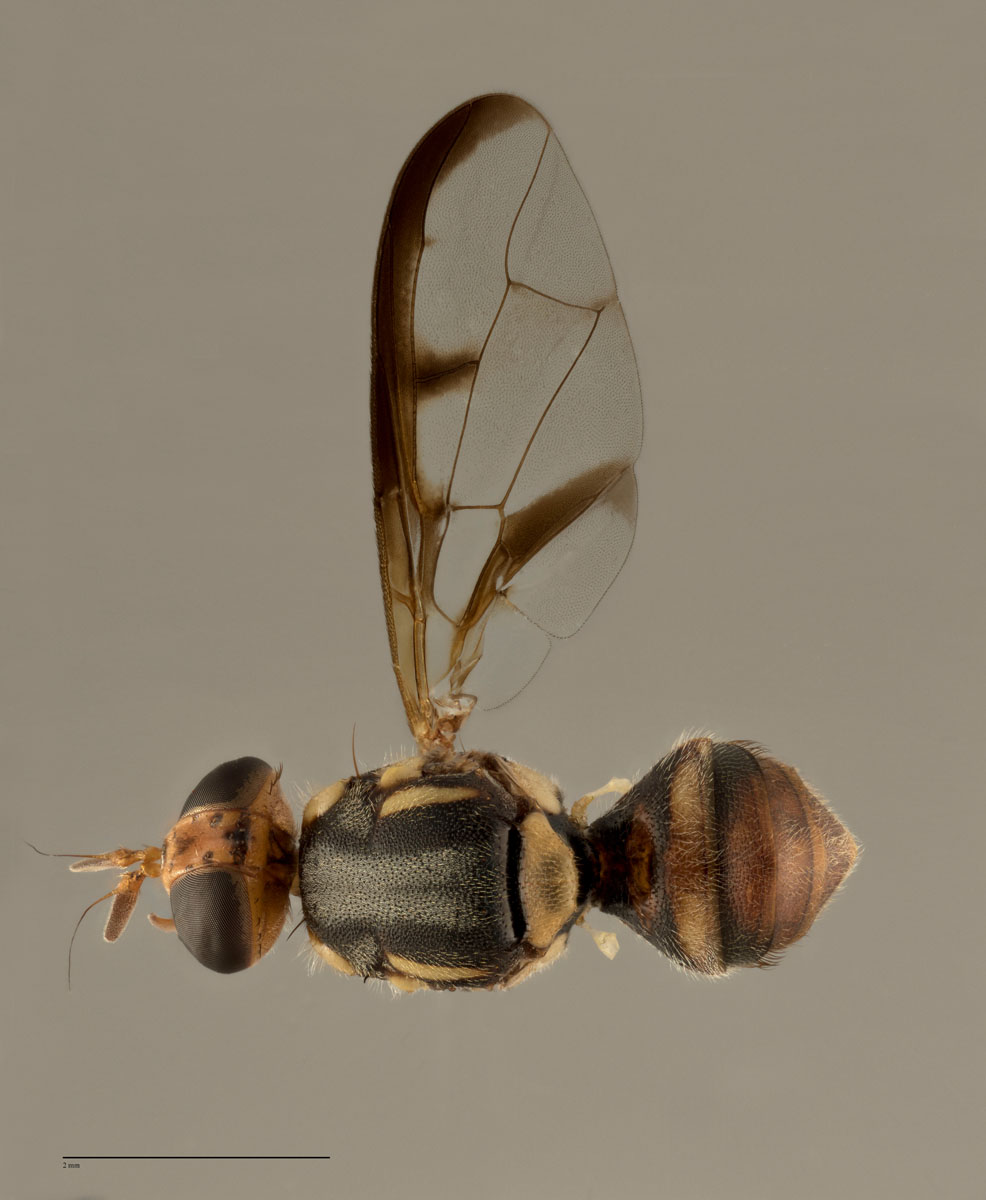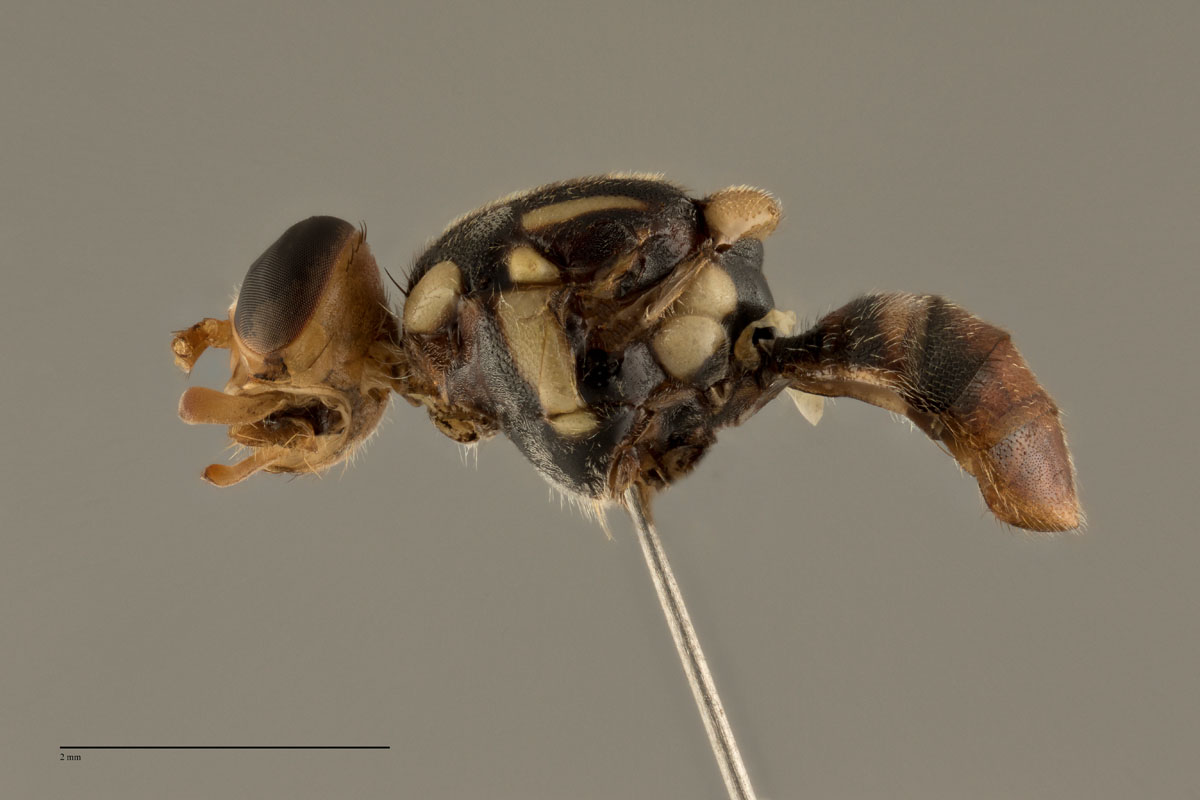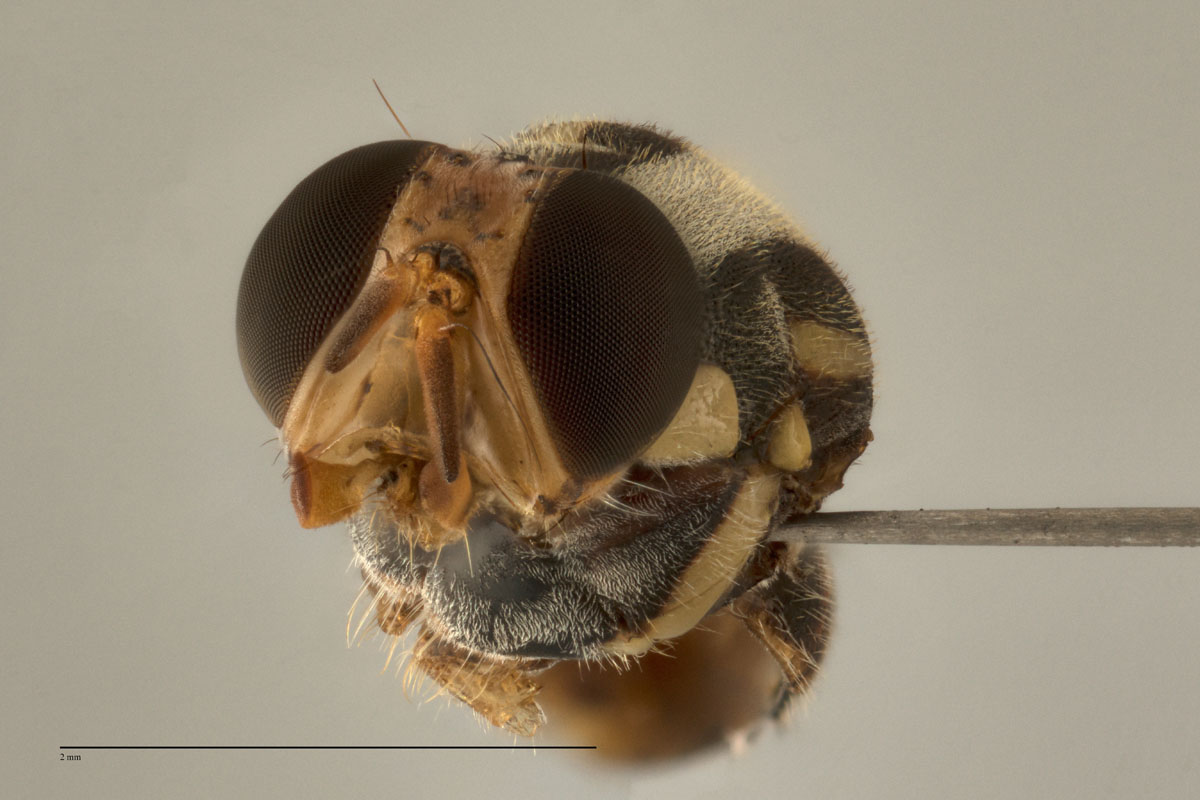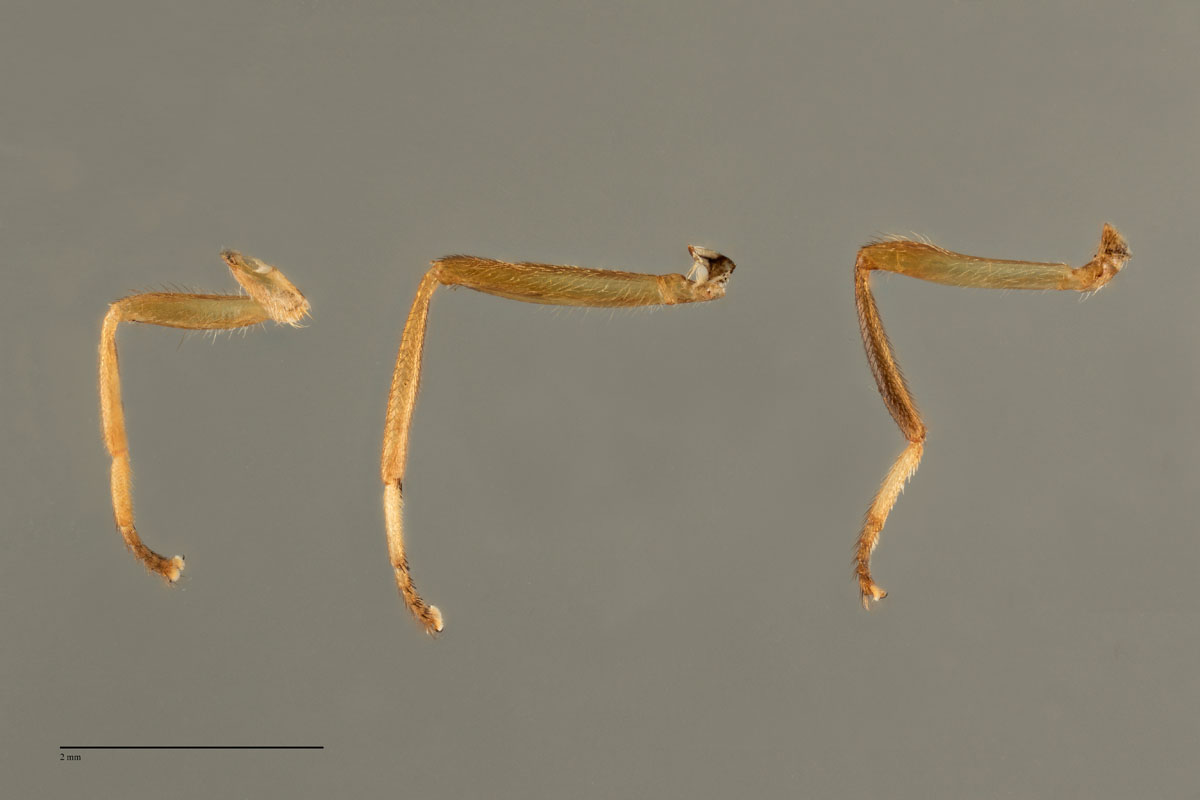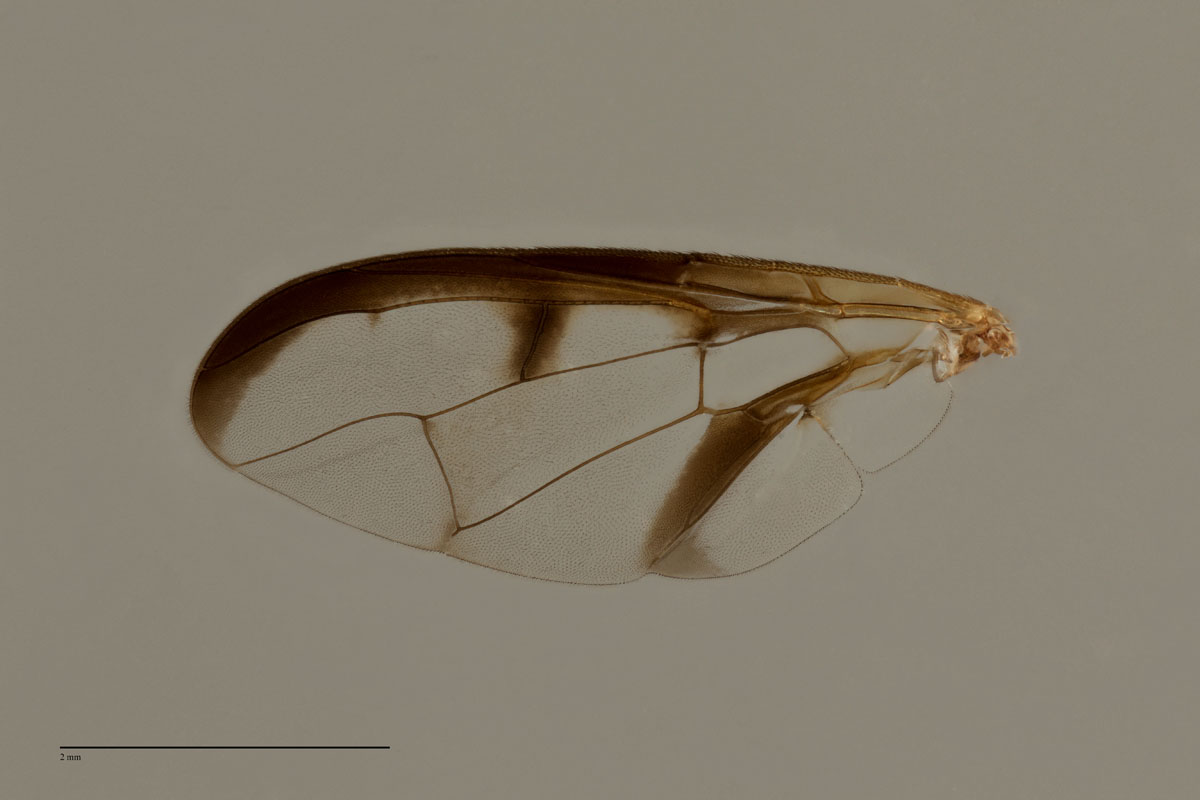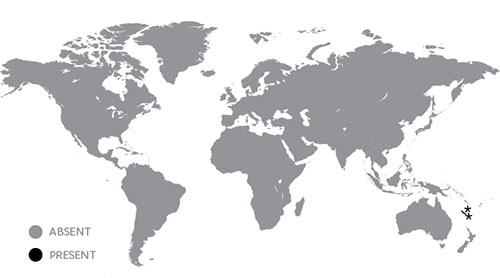Diagnosis
Morphological – adult
Features include:
- small species
- very small pale fuscous facial spots present or absent
- postpronotal lobes and notoluera yellow
- scutum black, mesopleural stripe reaching midway between anterior margin of notoplueron and anterior npl. seta, lateral postsutural vittae present, medial postsutural vitta absent, scutellum yellow
- wing with a broad fuscous costal band and anal streak, a broad fuscous band along r-m crossvein, cells bc and c pale fuscous, microtrichia covering cell c and outer corner of cell bc
- abdominal terga III-V orange-brown with a narrow transverse fuscous band along anterior margin of tergum III merging into broad lateral black margins on tergum III and with anterolateral corners of terga IV and V fuscous
- posterior lobe of male surstylus short
- female with aculeus tip needle shaped (Drew 1989, pers. comm.; Drew 2010, pers comm.; Royer 2017).
Morphological – larvae
Information not available.
Molecular
DNA barcoding
Diagnostic BOLD reference data available.
DDOSTs2 data
B. curvipennis CRV001 Classic specimen DDOSTs2
B. curvipennis CRV002 Abdomen variation DDOSTs2
EIF3L data
B. curvipennis CRV001 Classic specimen EIF3L
B. curvipennis CRV002 Abdomen variation EIF3L
FCOI data
B. curvipennis CRV001 Classic specimen FCOI
B. curvipennis CRV002 Abdomen variation FCOI
RPA2 data
B. curvipennis CRV001 Classic specimen RPA2
B. curvipennis CRV002 Abdomen variation RPA2
PCR-RFLP Test 1
BsrI: 570, 250
HinfI: Does not cut
HhaI: 620, 170
Sau3AI: 420
SnaBI: Does not cut
SspI: 550, 200
Vspl: Does not cut
Approximate ITS1 fragment length – gel: 850 bp
PCR-RFLP Test 2
RsaI and SspI produce diagnostic restriction patterns (See Restriction enzyme haplotype chart and Diagnostic restriction patterns).
RsaI: 490, 460, 410, 290
SspI: 1020, 580, 100
